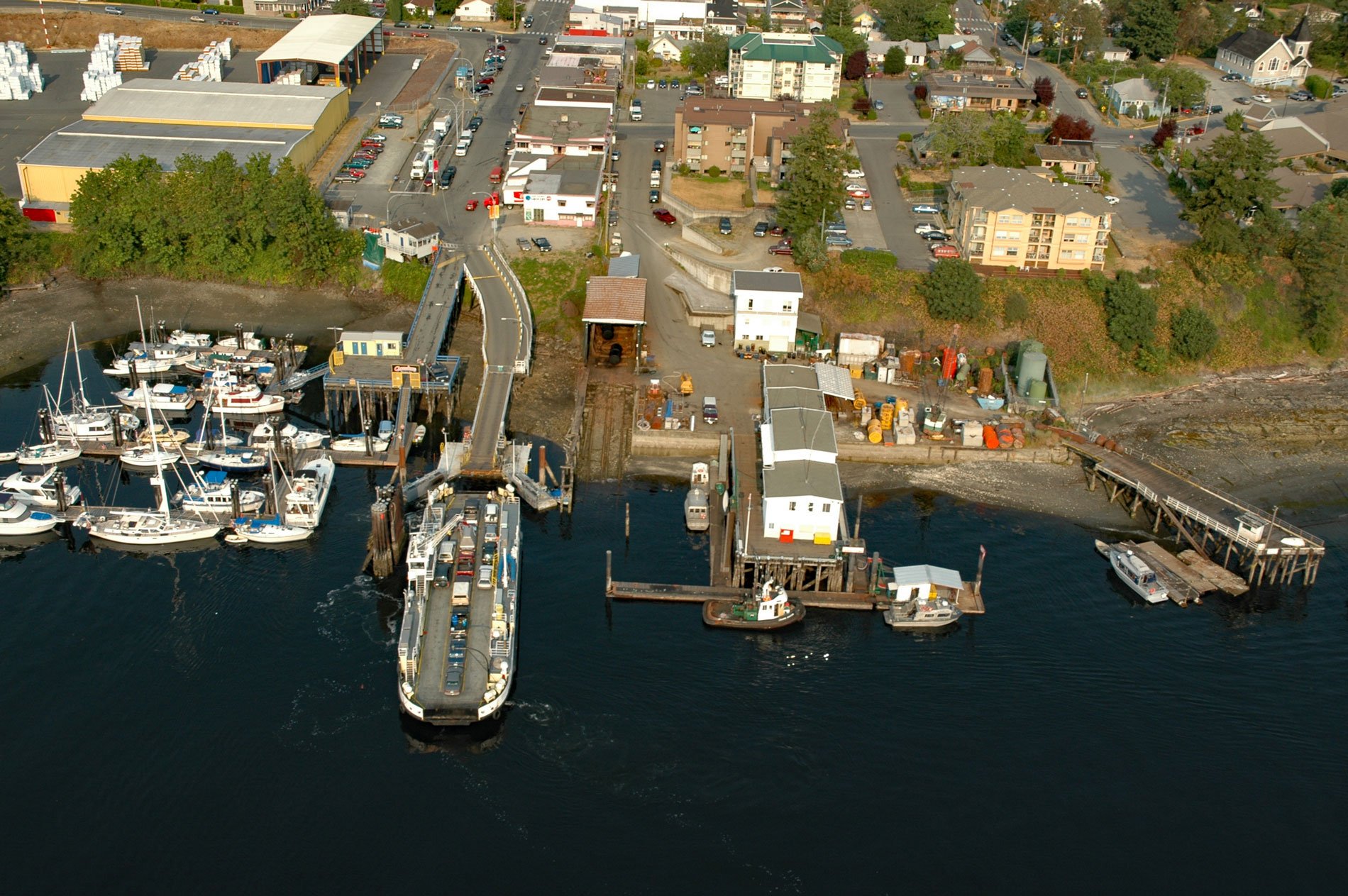Chemainus is a community founded as a logging town in 1858 on the western shore of Stuart Channel located on the east coast of southern Vancouver Island, about 36 miles (58 km) southwest of Vancouver and 24 miles (39 km) northwest of Sidney, British Columbia. The town is situated on the traditional territory of the Chemainus people, now known as the Stz’uminus First Nation, and named after the shaman and prophet Stz’uminus which translates to ‘broken chest’. The shaman reputedly survived a massive wound to his chest from an arrow in battle and became a powerful chief. Stuart Channel is named after Captain Charles E. Stuart who was in charge of the Hudson’s Bay Company post and served as magistrate at Nanaimo.
In the 1850s, the burgeoning logging industry on Vancouver Island was beginning to demand more extraction and processing ability than was available on the largely unsettled central island. The town of Chemainus was established as a center of support for the area logging industry. In 1862, a sawmill was built and Chemainus quickly became the hub of log processing on the east coast of Vancouver Island with the ability to strip, cut, stack, and ship the lumber out of one port. The Chemainus mill operated at capacity for much of the late 19th and early 20th centuries. By the time World War II was over, the mill was nearly 80 years old, and was showing its age. More efficient mills had been built in the area, and production in Chemainus was declining.
In the 1980s, British Columbia’s forest industry experienced a period of deep recession, largely caused by a decrease in demand and price of forest products. This came as a consequence of increased global competition within the forest product markets, the decreased availability of Vancouver Island forests, issues regarding First Nations land claims, and increased public support for environmental groups. This transition placed a heavy burden on coastal single-industry forest communities like Chemainus due to rising unemployment. Restructuring of the forest industry resulted in an overhaul of the local sawmill with automated, state-of-the-art, machinery installed. This restructuring and the declining forest industry led to a reduction in human labor which ultimately forced diversification of the local economy. Read more here and here. Explore more of Chemainus and Stuart Channel here:

